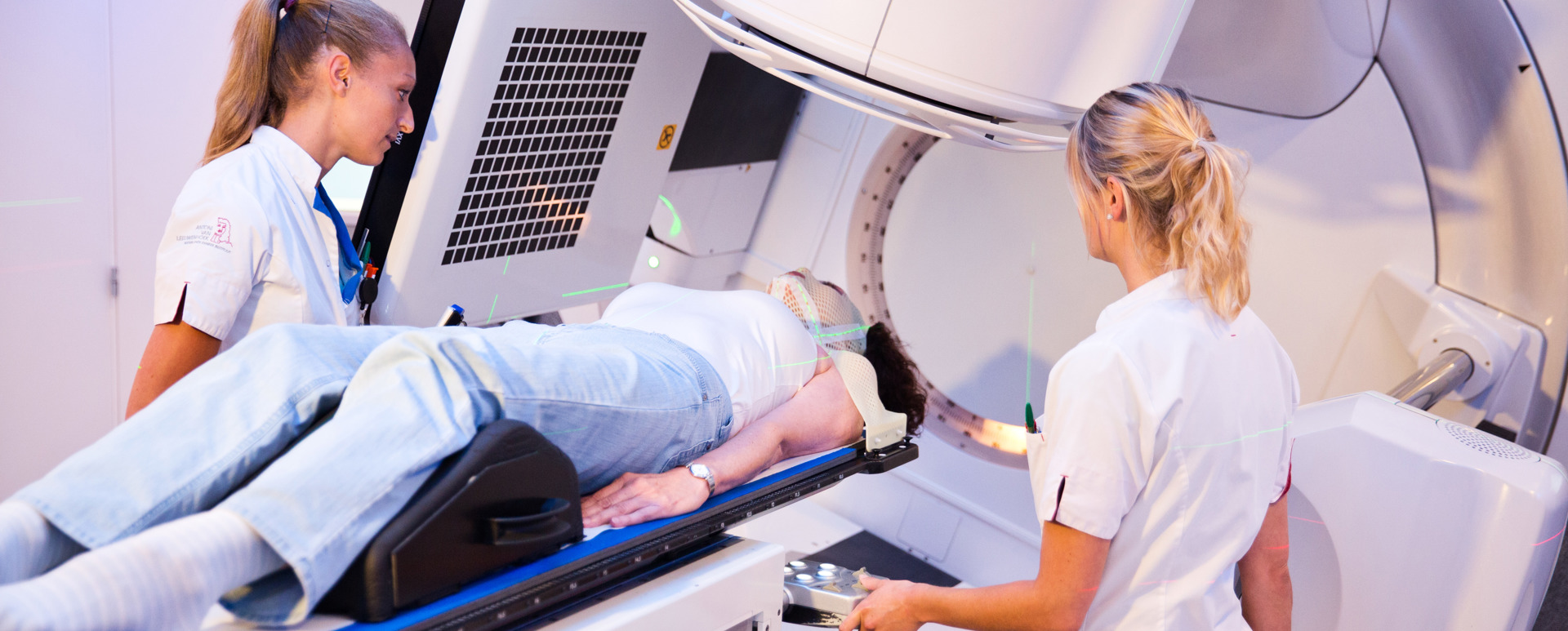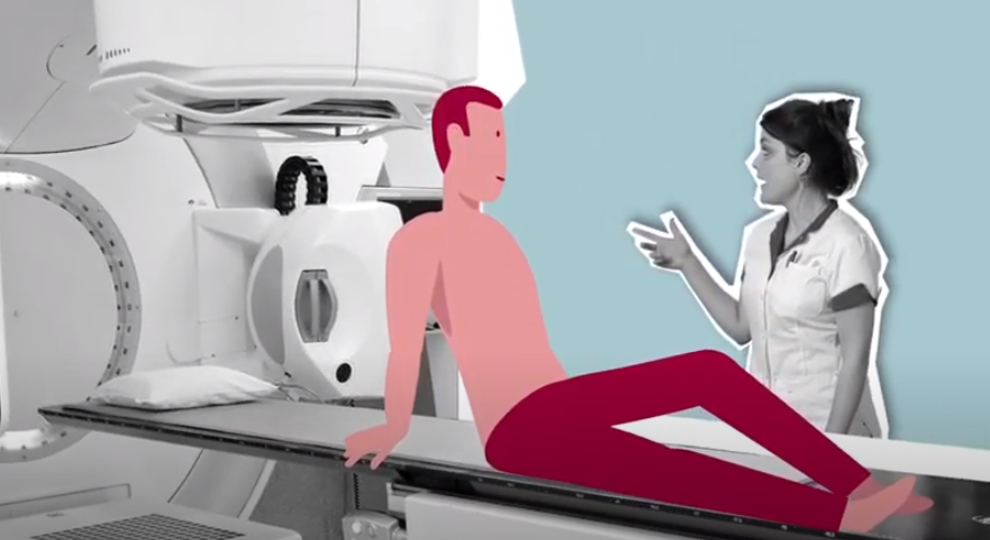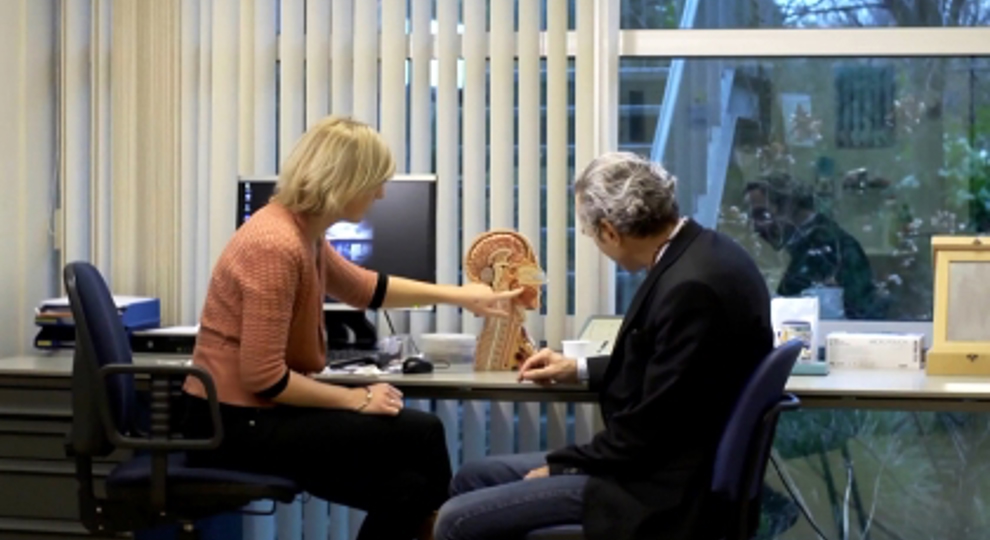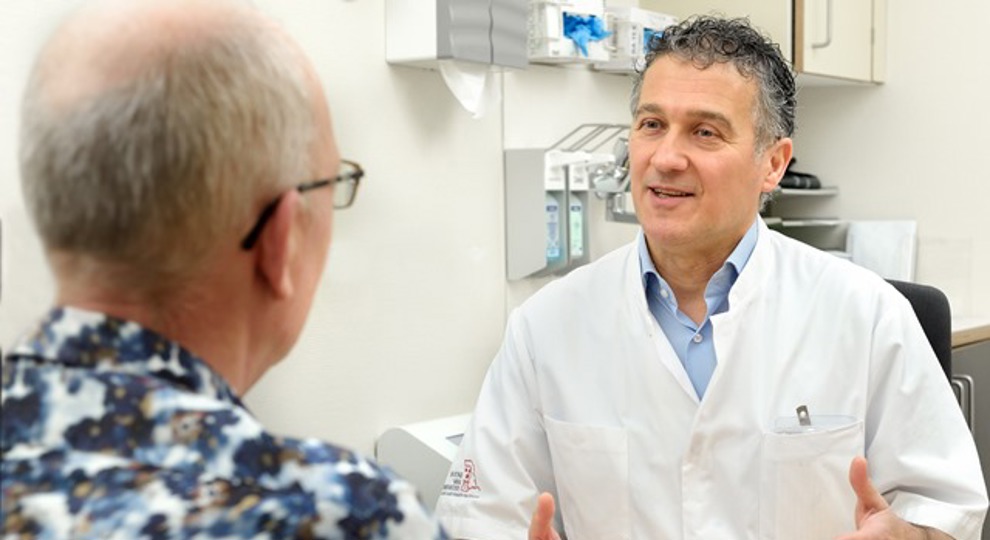Radiation therapy for head and neck cancer
Head and neck cancer includes tumors that develop in any kind of tissue in the head and neck area. Common types of head and neck cancer are: the tongue, the base of the tongue, the roof of the mouth, the throat cavity and the vocal cords.
Various radiation treatment options
Radiotherapy aimed at the head and neck area usually consists of 35 treatment sessions over a period of 6 to 7 weeks. In some cases we combine the radioherapy with chemotherapy or immunotherapy. We call this chemoradiation or bioradiation. This treatment uses drugs called Cisplatin or Cetuximab. Cisplatin kills the cancer cells and halts cell division. It can make cancer cells more sensitive to radiation treatment, which will increase the effectiveness of the treatment. You will receive 35 radiation sessions, combined with 3 chemotherapy sessions. Cetuximab is a drug that activates the immune response against the cancer cells. The cancer cells will be more sensitive to the radiation treatment, which can increase its effects. You will receive 35 radiation sessions and will be given 7 doses of immunotherapy.
If we suspect that some tumor cells remained after your surgery, we will deliver radiation after your surgery. The total amount of sessions you will have depends on the results of your pathological tests and can vary between 23 and 35.
Radiation can be given as a palliative treatment to alleviate the symptoms when the cancer has developed or spread, or if the tumor causes a lot of discomfort. This will shrink it and halt tumor growth, but the treatment cannot cure you. The number of sessions you will receive depends on your personal situation and can vary between 1 and 16.
 nl
nl
 Nederlands
Nederlands



